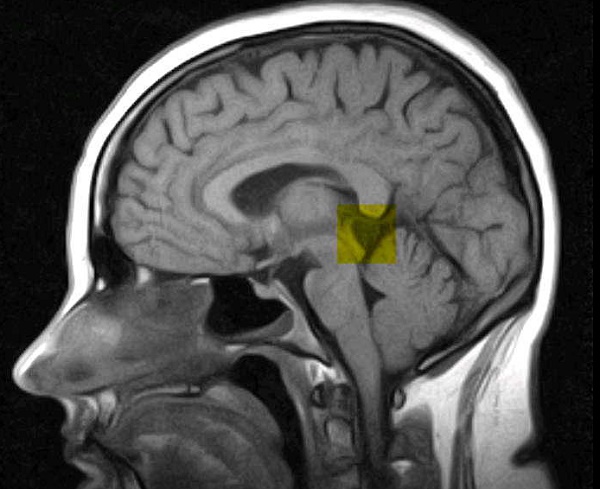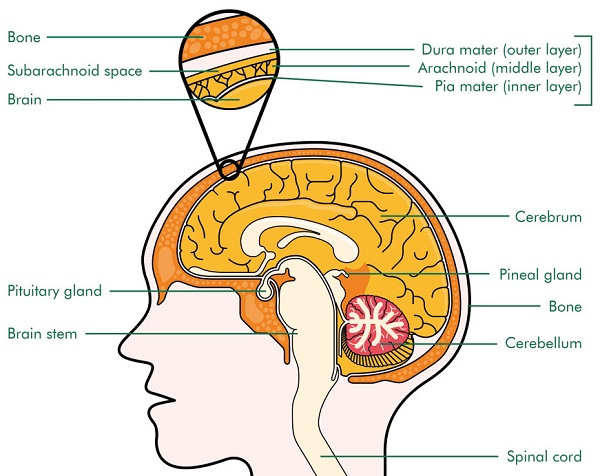Over the years, humans evolved to reach this anatomy and physiology of which we are so proud today. During this journey of evolution and betterment, humans – the only rational animals on planet, witnessed series of changes in their lifestyle; starting from the stone age to today’s digital era.
As our lifestyle kept changing, so did our anatomy. The organs and body parts that have been used throughout, still exist; while those that had a declining functionality have lost their importance and thus termed as Vestigial Organs. 
However, the answers to changing anatomy did not come up as easily as we can state them today. It took years of research and study to reach befitting answers that could satiate curious minds and nullify fallacies that were held strongly by people. As for instance, it was only around the mid 20th century, that our scientists could come up with some factual concepts related to our Pineal Gland; that was wrongly thought to be a vestigial organ.
Well, why this essential revelation took such a long span is still not clear and perhaps not very important. Today, we have sufficient theories for all questions; starting from why it is known as the third eye to pineal tumors and how to prevent it.
Pineal Gland – The Third Eye Link:
Pineal comes from the word ‘Pinea,’ a Latin word meaning ‘Pine cone’ that aptly describes the structure of Pineal gland. Yes, Pineal gland has a structure similar to pine cones, with the only difference that it is much more smaller in size, something similar to pea.
If one cuts this pine cone structure into two halves, internal structures are incredibly similar to normal human eyes. It consists of rod and cone structures as in retina. Similar pigments that are present in eyes are also traced here. Further, Pineal glands are light sensitive, thus making them very similar to eyes and hence, the name ‘Third Eye’ is somewhat justified. 
Pineal Gland is located in the epithalamus region of brain. This is the point where two sections of brain meet, or in other words, it is the center of brain. It is one of the smallest organ of all endocrine glands and approximates to 1/3 inch long in size with a reddish gray color. According to Theosophy, human ancestors did have visible third eye, that however, due to evolution has sunk and resides within the skull and is known as the Pineal gland.
What does the Pineal Gland do?
As it took quite a long time for pineal glands for coming to light, it was wrongly termed as a vestigial organ of our body. However, this has been proved wrong and today we know that Pineal Gland performs essential functions that are simply irreplaceable. So, let us have a brief understanding of Pineal Gland and its functions.
Pineal Gland secretes Melatonin, a hormone that helps you get a good night sleep and is also responsible for a number of endocrine functions. Secondly, Pineal gland, also known as Pineal body or organ, determines certain physiological functions within the body. To name a few, are – hunger, thirst, sex drive or onset of puberty and process of aging etc.
Melatonin Secretion:
Melatonin has two important functions to perform. First, it regulates our biological rhythm such as sleep and wake cycles. Second, it also regulates our reproductive hormones.
The secretion of this hormone is determined by light; wherein secretions increase during nighttime and reduce in day light. During the day, when light falls on retina, a message is sent to the hypothalamus and is then carried to Pineal Gland that is triggered to stop Melatonin secretion. Thus, we feel energetic during the day and sleepy at night. This is known as Biological rhythm, or what we know as the Circadian rhythm or the 24 hour biological clock.
Melatonin is responsible in maintaining a periodicity of our sleeping and waking time. These secretions are said to decline with age and it is perhaps because of this, that older people do have shorter durations of uninterrupted sleep. 
Jet lag is also related to Melatonin secretion. A difference of time zone hinders our sleep wake cycles. As melatonin secretion stops with break of light, we are unable to have a good sleep even when we are dead tired. Thus, a continuous feeling of tiredness and fatigue lingers for a few days.
Besides, Melatonin is also said to inhibit normal secretion of sex hormones (Luteinizing Hormone and Follicle Stimulating Hormone) from pituitary glands. Thus, melatonin or the Pineal gland impacts the reproductive health of humans. However, studies are still going on, to come up with more evidences backing the concept.
What happens with a malfunctioned Pineal Gland?
Pineal Gland disorders, more or less relate to disrupted melatonin secretion. Exposure to artificial light during night hours can hamper normal secretion of melatonin. People working in rotational shifts and night shifts are likely to suffer from this condition.
Again, vision problems that hinder normal entry of light into retina can also lead to abnormal melatonin secretion. Besides pineal gland disorders also relate to growth of tumors in the area. Pineal Gland Calcification is of great concern as it inhibits normal functioning of the gland and thus interrupted physiological metabolism.
Pineal Gland Calcification:
Pineal Gland Calcification implies to the deposition of Calcium phosphate crystals around the gland, that hardens it and stops it from normal secretion of the hormone.  This problem is seen in adults as well as children. There can be numerous reasons behind calcification; let us see a few of them.
This problem is seen in adults as well as children. There can be numerous reasons behind calcification; let us see a few of them.
Causes of Pineal Gland Calcification:
- Halides – Fluoride, Chlorine and Bromide: Halides are quite abundantly available in our diet. Out of all halides, Fluoride has the most adverse effects and is abundantly available in our diet. Fluorides get magnetically attracted to our Pineal Glands and form calcium phosphate crystals around the area. Toothpaste and tap water contains maximum concentration of fluorides. Besides, there can be many other sources of fluorides in our diet.
- Calcium Supplements: Calcium present in normal diet is not detrimental to our health; however, processed food and calcium supplements when taken in inappropriate amounts, can lead to calcium build up in the area.
- Mercury: Mercury is extensively harmful for pineal gland. Fishes such as tuna, prawns and shrimps contain high concentration of mercury and therefore limited intake of these food items is suggested. Besides certain medical vaccines, light bulbs are also said to contain mercury and therefore need to be used carefully.
- S.C.A.T: Sugar, caffeine, alcohol and tobacco also contribute to pineal gland calcification; directly or indirectly.
What can you do to decalcify Pineal Gland?
As already discussed, Pineal Gland calcification is more or less related to our diet and lifestyle. Therefore, decalcification steps involve bringing about necessary changes in our day to day eating habits. Below are few ways you can achieve decalcification:
- Garlic – Introducing small amounts of garlic in our diet can help to reduce calcification. Suggested amount is half to two bulbs of garlic every day.
- Distilled water – Tap water can be replaced with distilled water that has no fluoride or other toxins. Thus, you eliminate one of the major causes of calcification.
- Apple cider vinegar, tamarind, Neem extracts are all known to flush fluoride from body.
- Citric acid from fruits and lemon mixed with water can also prove beneficial.
- Iodine in small amounts can also help to remove sodium fluoride deposition from body.
Pineal Gland – Cysts and Tumors:
Pineal gland cysts and tumors are not very common as compared to other brain tumors; however, they account for 3 – 8 percent of intracranial tumors in children.
Pineal cysts are non cancerous fluid filled sacs that develop in the pineal gland region for reasons that have not been confirmed. Very small cysts do not show symptoms; however, large cysts cause headaches, vision troubles and seizures. 
Pineal tumors on the other hand develop inside or around the gland. The reasons behind such abnormal growth have not been determined. These tumors are dangerous and have resulted in confusion and memory loss.
Besides, nausea, vomiting and severe headaches do exist as preliminary symptoms. Inability to focus and double vision have also been reported as possible symptoms of this condition. Pineal tumors have also been related to cause untimed puberty in children, that can be either early puberty or late.
Insomnia and Hypertension:
A malfunctioned pineal gland does not produce accurate amounts of Melatonin and thereby hinders our sleep wake cycle.
Reduced production of melatonin leads to insomnia in many people. Although, this condition of sleepless nights can have many different reasons as well; melatonin is considered to be one of the primary reasons.
Insomniac patients suffer from fatigue and stress. Low blood pressure and continuous irritation are some of the detrimental effects it can bring about.
On the other hand, excess production of melatonin causes Hypertension that may prove fatal. Low production of progesterone and impaired adrenal functions also find their roots to pineal disorders. Further, seasonal affective disorder, such as depression and stress during cold winter season, also relates to over production of melatonin.
Diagnosing Pineal Disorders:
It is unfortunate that Pineal tumors are equally common with children, as they are with youngsters and elderly adults. Pineal disorders are rare; however, if they develop, they can prove fatal in cases where diagnosing is delayed. 
Therefore, any mild symptoms such as headaches, nausea, vomiting or confusion needs to be discussed with doctors immediately. Pineal tumors or cysts, similar to any other brain tumor can be detected with imaging tests – MRI and CT Scan.
Besides, a blood test done to identify tumor markers can help to determine presence of tumor in the pineal gland. These tumor markers also help doctors to formulate treatment plans that can nullify specific germ cells efficiently.
Further, surgical biopsies are also carried out to determine tumor growth in or around the pineal gland.
Thus, this was all about Pineal Gland or the third eye regulating our biological clock. Circadian Cycles are very important to keep one at the best physical and mental state.
Therefore, preventing calcification of pineal glands by bringing about necessary changes in our lifestyle is very essential. Besides, tumors and cysts that prove fatal can also be treated if early symptoms are reported to facilitate accurate treatment procedures.
I would like to respectfully ask for permission to use a few of these photos for a book project. My book is called Cognitive Light Therapy and Counseling, Clinical Observations, Theory’s and Dynamics of LED Therapy.
Very Respectfully,
Dr. Jeremy Orosco Ph.D.